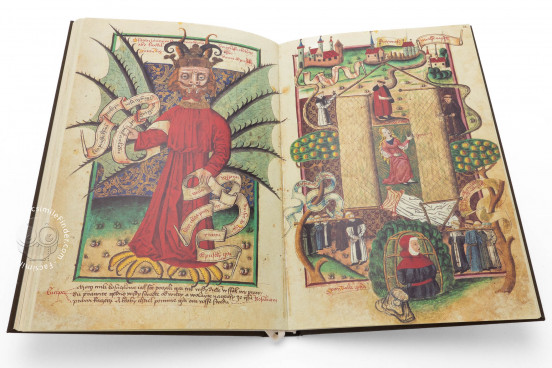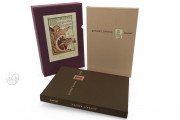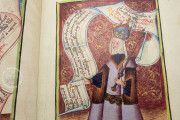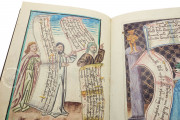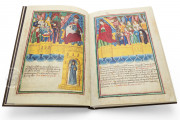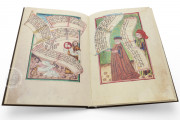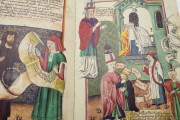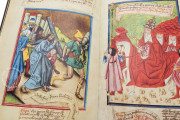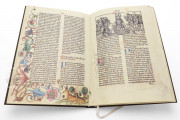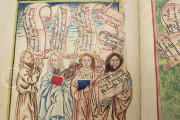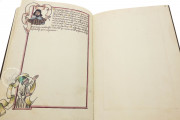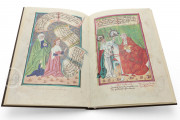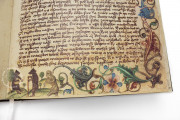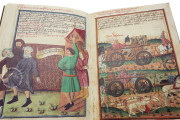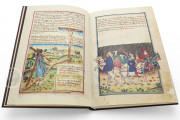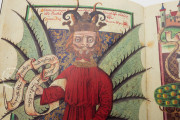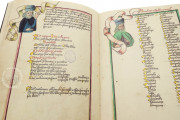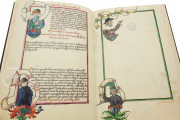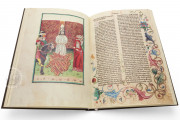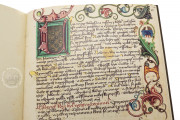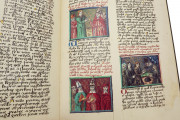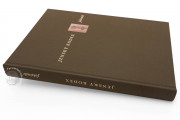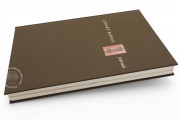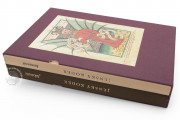The Jenský Codex is a richly illuminated Czech manuscript from the late Middle Ages. It was created around the year 1500 at the behest of the Utraquist Bohuslav of Čechtice. The codex includes several manuscript portions and an incunabulum on 111 paper sheets and nine parchment sheets, featuring 122 illuminations, primarily by Janíček Zmilelý of Písek.
In the second half of the 16th century, the codex ended up in Germany, probably as a gift to Martin Luther. For several centuries, the manuscript remained stored in the university library of Jena, after which it took its current name. The codex, originally recorded as Antithesis Christi et Antichristi at the Jena library, was rediscovered by Josef Dobrovský at the end of the 18th century. Dobrovský was able to examine it in detail during his foreign travels and he contributed to its identification and dating.
At the beginning of the 20th century, for the first time since the 16th century, the manuscript was once again on Czech territory. In 1951, East Germany's President Wilhelm Pieck presented it to the Czechoslovak Klement Gottwald as a state gift. A significant surge in interest on the part of both experts and media outlets in the 1950s and 60s worsened the already poor physical condition of the codex, leading to extensive restoration work in 1985.
Today, the manuscript is preserved at the National Library of the Czech Republic. In March 2010, it was exceptionally exhibited at the Prague Castle, and then again in June 2015 at the National Library, on the occasion of the 600th anniversary of Jan Hus's burning.
The codex comprises various texts in Czech and Latin focusing on Christian-philosophical and Hussite themes. Notable illustrations depict motifs from Hussite history, such as the burning of Jan Hus (38r) and the phrase "Veritas vincit" (Truth prevails) alongside a chalice (56r), or the blind Jan Žižka leading the troops (76r), a figure which, although altered, also appeared on the Czechoslovak twenty-crown banknote after 1970. The contents of the codex tend to be pro-Hussite and anti-Catholic; an example of this can be found in some of the illuminations, such as crusaders carrying the corpse of a child impaled on a spear (56r), a cardinal crowning a prostitute with a papal tiara (70r), and a priest murdering a child (77r).
We have 1 facsimile edition of the manuscript "Jenský Kodex": Jenský Kodex facsimile edition, published by Gallery, 2009
Request Info / Price
